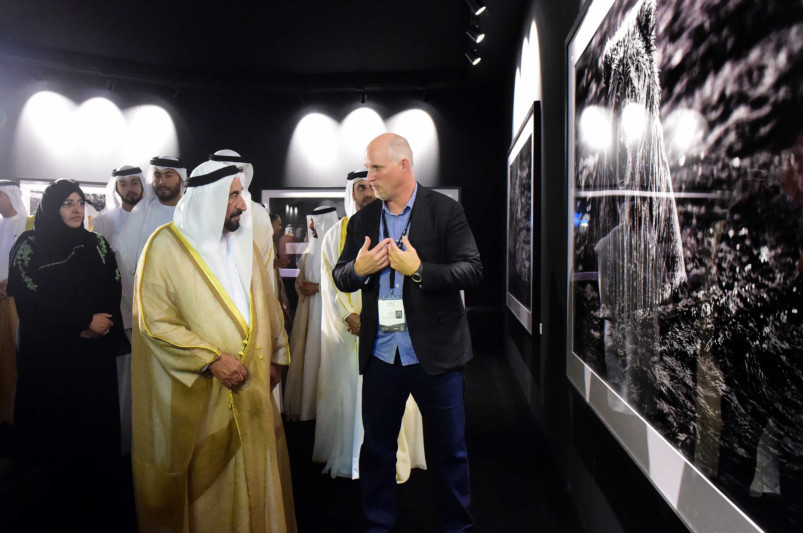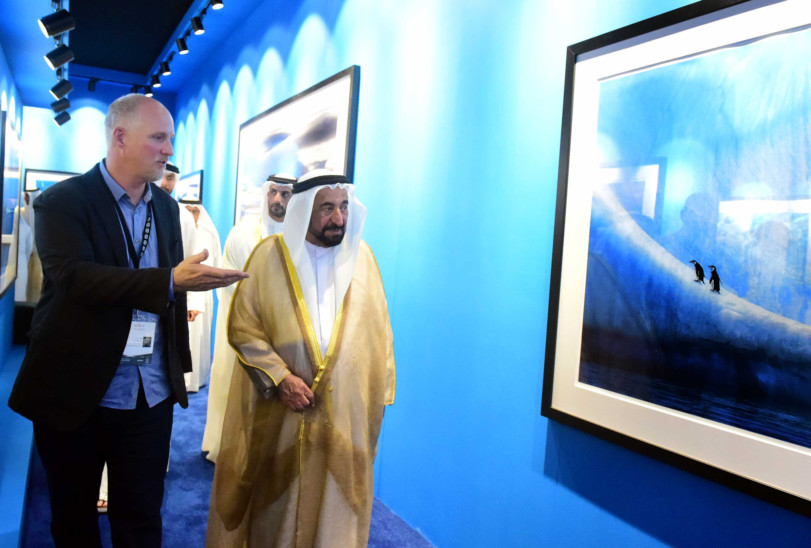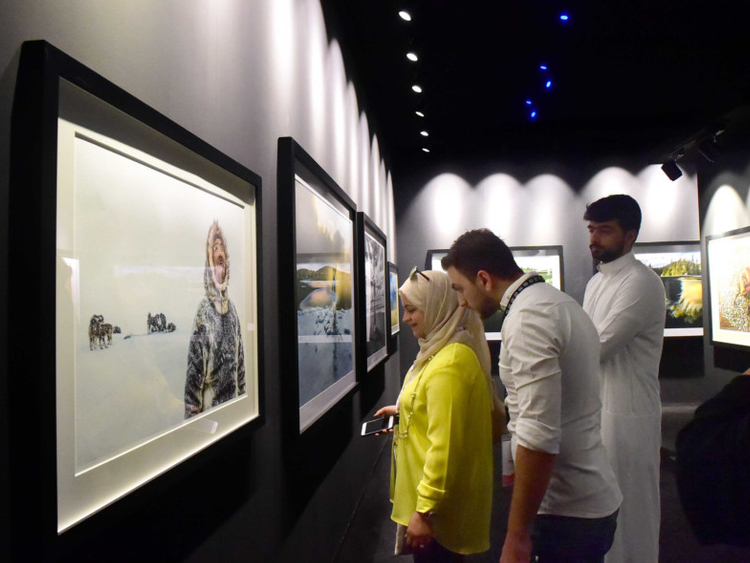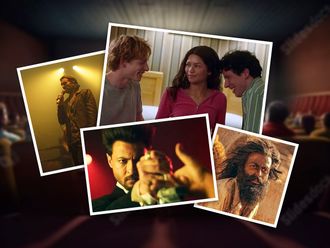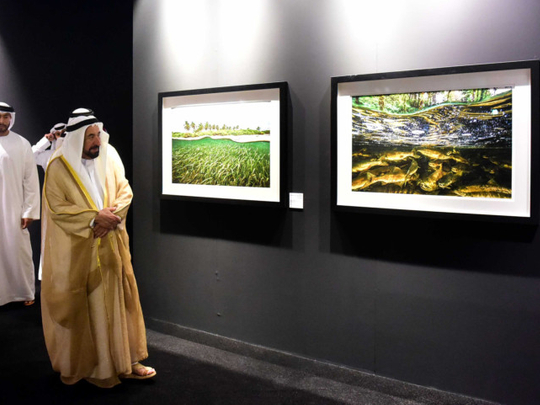
Sharjah: Fake news is the biggest challenge facing the media today, eroding people’s trust in the true storytellers, said a multi-award winning photojournalist during the opening session of Xposure 2017 on Wednesday.
The four-day event, which will see a galaxy of world’s leading photographers showcasing their work and speaking about the challenges they face in bringing the true stories to the world, was inaugurated by His Highness Dr Shaikh Sultan Bin Mohammad Al Qasimi, Member of the Supreme Council and Ruler of Sharjah.
Speaking to Gulf News, following the opening session, Muheisen elaborated further on the challenge of fake news facing the digital world today.
“Back in the day, being a photojournalist, you were a responsible person documenting life with respect and dignity. Now a days, it is a bit different. With the rise of social media platforms, the world is getting closer. Whatever you drop in the social media, it’s easy for others to pick it up, change it and spread it. Anybody can write anything and publish, which is at the same time empowering as well as dangerous.”
He added that with so much circulation of fake news and pictures on the digital platforms, it has now become important to verify the authenticity of everything at every step.
“There is misinformation, manipulation and lack of ethics. The important job of a photojournalist is that if you are out there on the field taking pictures, it is not just a picture, it’s a story and the stories are about people and when you are manipulating the picture, you are distorting the facts and stories about the people, which is unethical,” said Muheisen, who has been documenting the stories of human suffering in conflict zones for 17 years.
Born and raised in a conflict zone in Occupied Jerusalem, documenting people’s agony came naturally to him.
“I realised from the beginning that my mission is to document what is happening around me. I began documenting the wars and tell the stories of people who were the victims of war. I was born and raised in a conflict zone, so that was and still is my passion,” said Muheisen, who has spent several years in Iraq and Afghanistan, documenting the stories of human struggle and survival.
Muheisen said that he chose to be a storyteller because that was the only thing he was passionate about.
“I chose to be a storyteller. You can be a storyteller who tells the stories about animals or landscapes, but I chose to tell the stories of the people, of vulnerable people who were forced to flee their homes, leaving everything behind and start a life with nothing ... to tell their stories and carry their voices; and if I am not a credible photographer, their stories will not be believed, so the trust is the most important factor in the exchange of information,” said the 36-year-old, who moves around the world in search of stories.
He says being at the right place at the right time is the key to documenting true stories, even if that means risking one’s life.
“If something happened and is never documented, it is like it never appeared, being at the spot at the right moment is important. Sometimes you have to risk your life doing this, just like my best friend and award-winning photographer Anja Niedringhaus did when she was killed covering the 2014 elections in Afghanistan,” he added.
Muheisen had known Neirdringhaus since 2003 and both had worked on several projects together.
Risking his life every day to bring the true stories of people, Muheisen feels he has been lucky to survive several close shaves.
However, he says, the real focus is not him but the people he covers, who are the real heroes.
“I am only the person who captures the pictures and I am not the person who is suffering. Because, I would go back to my safe haven but they will remain in their misery. That’s why I hope my pictures will be able to help them,” he said.
One thing that he has learnt from observing all these conflicts from up close is the resilience of human spirit.
“What I learnt from refugees is that they adjust easily to (having) nothing. They are survivors, they live day by day as it comes, taking nothing for granted. I have spent years with them and I have seen that they are kind, proud and dignified even in their suffering. They are the true survivors and that has reflected on me,” he added.
Taking place at the Expo Centre Sharjah, the international photography festival also offers workshops and symposia for aspiring photographers as well as an exhibition of the latest in the technologies of imagery.
Aspiring photographers get to showcase work
An exhibition featuring the work of the 17 winners of the festival’s photography competition, which saw entries from 10,000 photographers from 98 countries around the world, is also being held as part of Xposure 2017.
Another exhibition includes 50 display panels and images by young talented and new photographers that are being displayed as part of a new initiative introduced this year by the festival’s organisers. The work of the aspiring professionals is featured alongside that of renowned international photographers in the same space.
The initiative is aimed at motivating talented photographers by giving them a valuable opportunity to promote their work at the festival where international photography agencies and companies can be attracted to and become interested in their work.
Faces of Sharjah
Among the series of exhibitions at Xposure 2017 showcasing different areas of life across the world is a range of pictures by Mohammad Muheisen documenting the stories of the people of Sharjah.
Aptly titled ‘Faces of Sharjah’, the pictures that were taken over the last two weeks, document lives of people from different walks of life — from fishermen and mechanics to schoolgirls and families going about their daily lives.
“It was a beautiful experience coming to Sharjah and walking the streets of the city and meeting the people here. I met people of different nationalities and professions and one beautiful thing that I saw common among all was that they were so welcoming. They were so excited and happy to be photographed, which is actually the opposite of what I imagined when I first came here,” said Muheisen, who is known for his pictures from conflict zones.
He said just like his conflict pictures, Faces of Sharjah also tell stories of people and shares slices of their every day life.
“This is exactly what I do, in war zones or elsewhere — I capture the moments of daily life wherever it is. The idea here is to show the slices of life of the people who live in Sharjah and who are they. And what’s the best way to tell their stories other than pictures!” he added.


